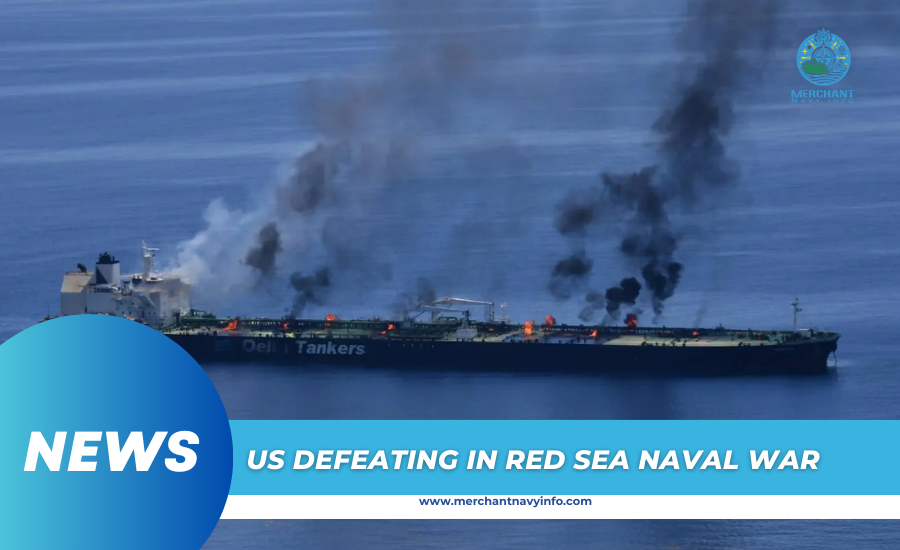
The success of the Iran-backed Houthis is another example of how America’s enemies are undermining the world order.
Even by the standards of the Middle East, the past year has been full of surprises. A surprise attack by Hamas led to the bloodiest day for Jews since the Holocaust. The resulting war between Israel and Hamas in Gaza lasted longer than anyone initially thought. Iran launched perhaps the largest drone and missile attack on Israel in history, but unprecedented cooperation from other countries in the region and beyond mitigated the impact of the attack.
Yet the biggest surprise for the world order is also the most dangerous. The Yemeni Houthis, an extremist parastate group that most Americans have never heard of, have posed the most serious challenge to freedom of the seas in decades, arguably defeating an exhausted superpower along the way.
The Houthis began striking shipping through the Bab ul Mandeb Strait, which connects the Red Sea to the Gulf of Aden, in late 2023. In theory, their attacks are motivated by sympathy for the Palestinian people and an effort to gain status in the international community. They are known as the Axis of Resistance, a Middle Eastern representative group backed by Iran.
In January, Washington responded with Operation Prosperity Sentinel, which included defensive operations to protect shipping from drone and missile attacks, mostly conducted by U.S. destroyers, and airstrikes against Houthi offensive capabilities in Yemen. The results have been modest at best.
Red Sea Crises: Houthis – US Naval War
The Houthis have cut traffic through the Suez Canal by more than half, depriving Egypt of toll revenue. They bankrupted the Israeli port of Eilat on the Gulf of Aqaba. Nearly a year later, the group appears less intimidated and more emboldened: It recently disabled an oil tanker, with potentially catastrophic environmental consequences. The waterway, through which 10% to 15% of global trade passes, has become a zone of destruction.
The saga combines old and new dynamics. Bab al-Mandab, which means “Gate of Tears” in Arabic, has long been a focal point for fighting. The choke point is surrounded by instability in the southern Arabian Peninsula and the Horn of Africa. The situation has sparked conflict and foreign intervention for decades, but the Houthi movement has also exposed recent global problems.
One of them is the low cost of energy projection. The Houthis are not a traditional military giant; they don’t even fully control Yemen. Yet, they use drones and missiles to control access to vital maritime areas.
The Houthis have done this with help: Iran has provided weapons and the technical know-how to build them. However, the Red Sea crisis continues to show that seemingly small-scale actors can use relatively cheap capabilities to expand their reach of destruction.
The second feature is strategic coordination among America’s enemies. The Houthis have become more formidable thanks to instructions from Iran and Hezbollah. Since October 2023, they have allowed most Chinese ships to pass through intact. Russia, which is keen to retaliate against Washington, has also encouraged and apparently supported the Houthis.
Beijing and Moscow reap geopolitical rewards when Middle East conflicts overwhelm the United States, so both are willing to let the crisis fester and even worsen.
Worse is America’s aversion to escalation, rooted in military overload. The global superpower has been locked in a fruitless standoff with a group of right-wing extremists. Claims that such extremism makes the Houthis “indestructible” are vague.
Most importantly, Washington hesitates to take tougher action—such as sinking an Iranian intelligence ship supporting the Houthis or attacking infrastructure inside Yemen that supports their government—for fear of escalating a tense regional situation.
This approach reduces the risk of escalation in the short term but allows Tehran and the Houthis to maintain the confrontation at their preferred temperature. It also reflects the US military’s fundamental fatigue, which lacks enough cruise missiles, laser-guided bombs, attack aircraft, and warships to sustain the campaign more aggressively without affecting preparations for conflict in other regions.
Hence, the fourth characteristic is an analysis of standards the international community takes for granted. The damage to global trade caused by the Houthis is limited because of the adaptability of the shipping networks that underpin the global economy. But the precedent is terrible: the Houthis have disrupted freedom of the seas in a vital region and at a very limited cost.
Meanwhile, Russia’s war in Ukraine has revealed another fundamental principle: the rule of non-aggression. Reactionary forces challenge the global rules that underpin the relative wealth, security, and stability of the post-1945 world.
A radical adjustment by the United States is unlikely to be immediate. President Joe Biden continues to pursue an elusive ceasefire between Israel and Hamas that would at least deprive the Houthis and other Iranian proxies of an excuse for violence. However, no one is sure whether it would end attacks on Red Sea shipping. Biden hopes to get through the presidential election without further problems with Tehran.
But this strategy of chaos may not last. Whoever becomes president in 2025 will have to confront the reality that the United States is losing the battle for the Red Sea, with all the pernicious global implications that entails.









